Amaryllis flowers are winter-hardy and an excellent choice to display indoors during the holiday season. They add bright tropical color to your home. However, you may also want to grow them outdoors, so when can you plant them outside? We have researched to find the answer you need.
You can plant amaryllis outside after winter or once the frost subsides. This plant will fully bloom in mid-spring. It will develop stronger stems and more blooms under full sun.
To find out more about how to plant amaryllis and learn other necessary details in growing it, continue reading the post.

When Should You Plant Amaryllis In Your Yard?
You can plant amaryllis outdoors once frost has passed to prepare for spring and summer. Generally, the best time to plant amaryllis in your garden is when the daytime temperature is about 70 degrees Fahrenheit.
You can use a thermometer to test the temperature. Stick the thermometer in the ground and wait for five minutes before checking. Amaryllis blooms best in mid-spring. You should plant it in well-drained soil.
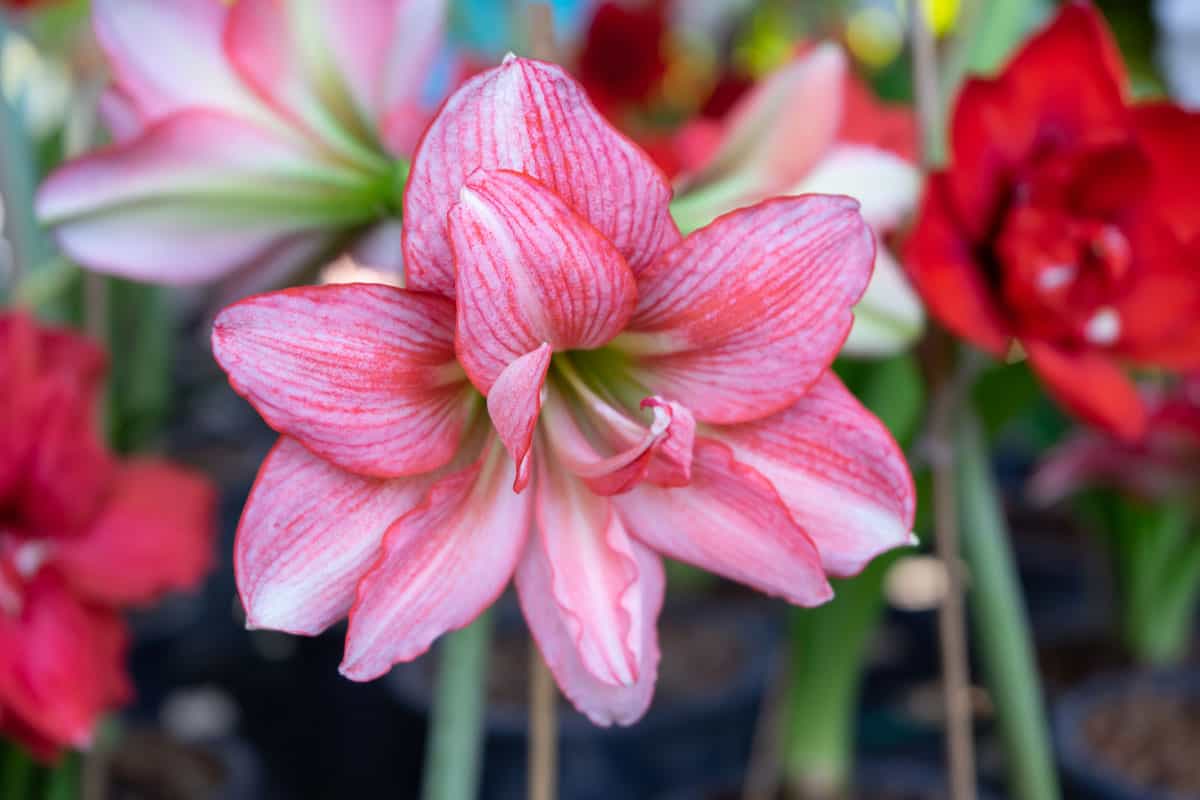
If you can't wait for the consistent desired daytime temperature, you can grow your amaryllis in a pot indoors and transplant it once the outdoor weather is favorable to the plant's needs.
Amaryllis has two flowering bulb species, Amaryllis–belladonna and Amaryllis paradisical, and both species are native to South Africa.
These flowers come in various colors, such as pink, white, red, orange, or salmon. The fragrant, trumpet-shaped flowers bloom on long stems.
How To Grow Amaryllis
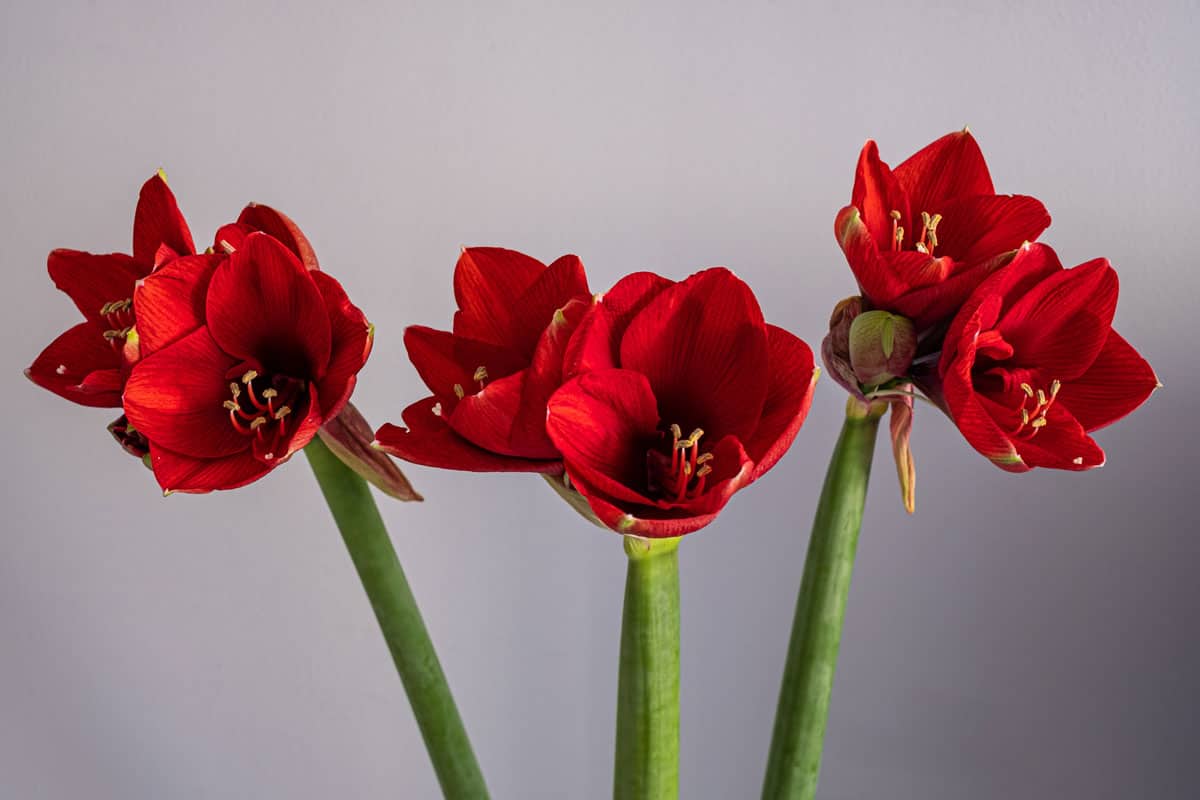
Amaryllis balls come in different sizes and different varieties of colors. There are several ways to grow your amaryllis:
Forced Indoors
To force-bloom amaryllis indoors for the holidays:
- Choose a pot that is not too big and can fit your amaryllis ball. Ensure that there is drainage at the bottom.
- Fill the pot halfway with soil.
- Place the bulb in the soil, and ensure the roots are down.
- Add more soil around the bulb and press it down firmly.
- Water the soil, but avoid overwatering. Amaryllis likes moist soil that's not too wet.
- It will take three weeks for the Amaryllis to bloom. It should stay in bloom for a few more weeks.
Watch the video to learn more about how to force-bloom amaryllis indoors.
Waxed Bulbs Outdoors
Consider your location and temperature before planting amaryllis in your garden. Amaryllis is winter-hardy, but it may not come back if the weather is freezing. According to experts, you should plant the bulbs 10 inches deep.
Here is how to plant an amaryllis bulb:
- Remove the wax cover on the roots.
- For starting plants, use a bio-tone starter fertilizer to encourage growth.
- Dig and loosen the soil using a fork, then sprinkle fertilizer on the ground soil.
- Use a shovel to dig more and plant the bulbs deeper.
- Put in the bulbs and cover them with soil.
Dig the bulbs by the end of September, trim the roots, and cut the foliage. Dry the balls for two months and transplant them in a pot or container to grow indoors.
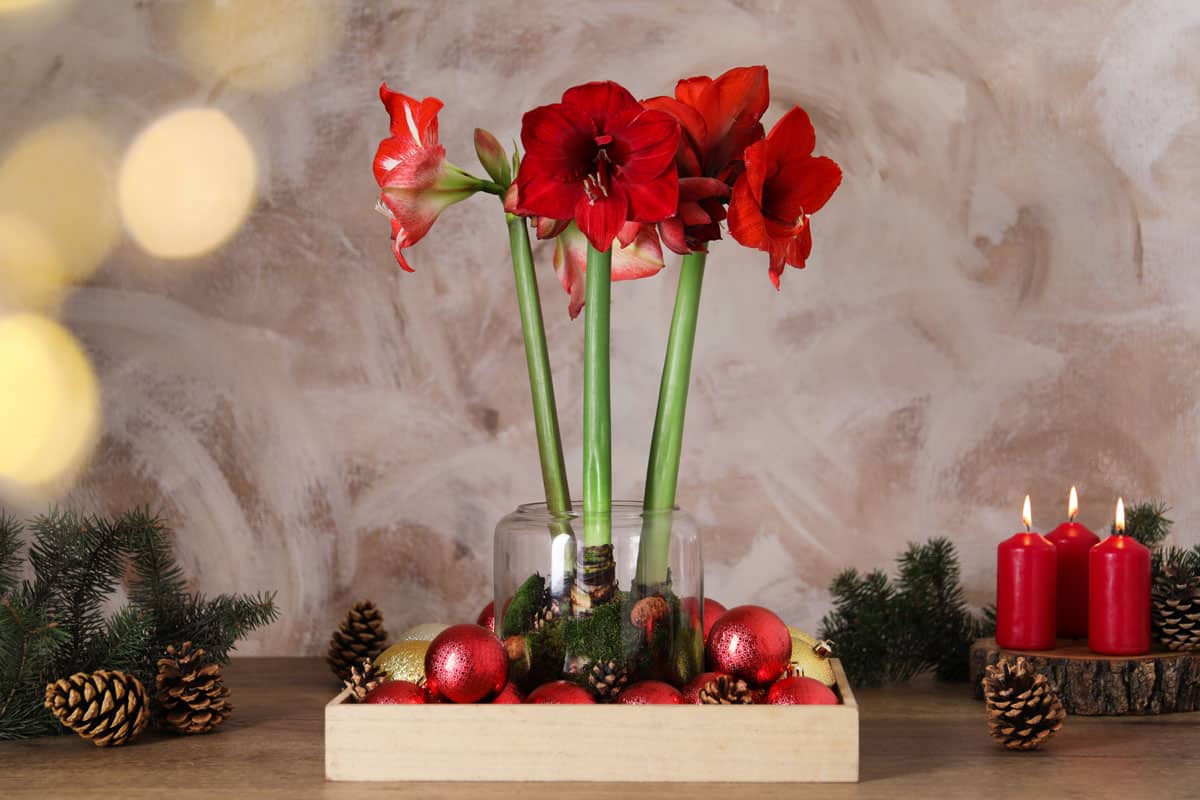
Watch this video to learn more about how to plant amaryllis bulbs outdoors.
Water-grown
Amaryllis can also grow in water. Here are the steps on how to grow amaryllis in water:
- Fill a glass container with pebbles.
- Place the amaryllis bulb in the container. Ensure that the roots and not the bulb are touching the water to avoid bulb rot.
- Wait up to four weeks for the flowers to bloom.
Watch this video to learn more about how to grow amaryllis in water.
How To Save Amaryllis Bulbs In Winter
Most gardeners do not throw their amaryllis bulbs away because they make good holiday decorations in winter. Here is how to rebloom an amaryllis bulb:
- Dry the plant and stop watering it before replanting the bulb.
- Cut off about a third of the root system and loosen the roots.
- Cut the old foliage and leave a few inches above the bulb.
- Get a new pot that fits the bulb for the new root system to grow. Fill the bottom with soil.
- Place the bulb in the pot and fill it with more soil. Avoid covering the entire bulb and leave the top exposed.
- Apply regular fertilizer.
- Water and wait for new growth of foliage before watering again.
- Place the pot indoors. The amaryllis will not bloom immediately. It may not bloom until February, but it's worth the wait.
Watch the video to learn more about how to save amaryllis bulbs in winter.
Why Isn't Your Amaryllis Flowering?
These are a few possible reasons why your amaryllis is not blooming:
Lack Of Light
The amaryllis needs sunlight to convert into sugar and store it in the bulbs. If there is no sunlight as a food source, the flowers won't bloom. The new leaves will also wither and die due to inadequate sunlight. Ensure that the amaryllis is in sunny spot.
Watering Issues
Overwatering or underwatering will result in the bulb not sprouting, or worse, lead to bulb rot. Water the bulb once upon planting, and water it again when it sprouts.
Avoid excessive watering when the flowers appear. Once you get the blooms you want, reduce the consistent watering. Water the plant when the topsoil feels dry and don't soak the soil.
Poor Soil
Amaryllis won't thrive in poor, damp soil. Flooding the potting soil will cause the root or the bulb to rot. Ensure that you use well-drained potting mix soil to avoid waterlogging.

A mix of loam, perlite, and rotted manure with a 2:1:1 ratio is an ideal substrate for amaryllis. Another recommended mixture is loam, sand, and compost, with equal measurements.
What Diseases Are Amaryllis Prone To?
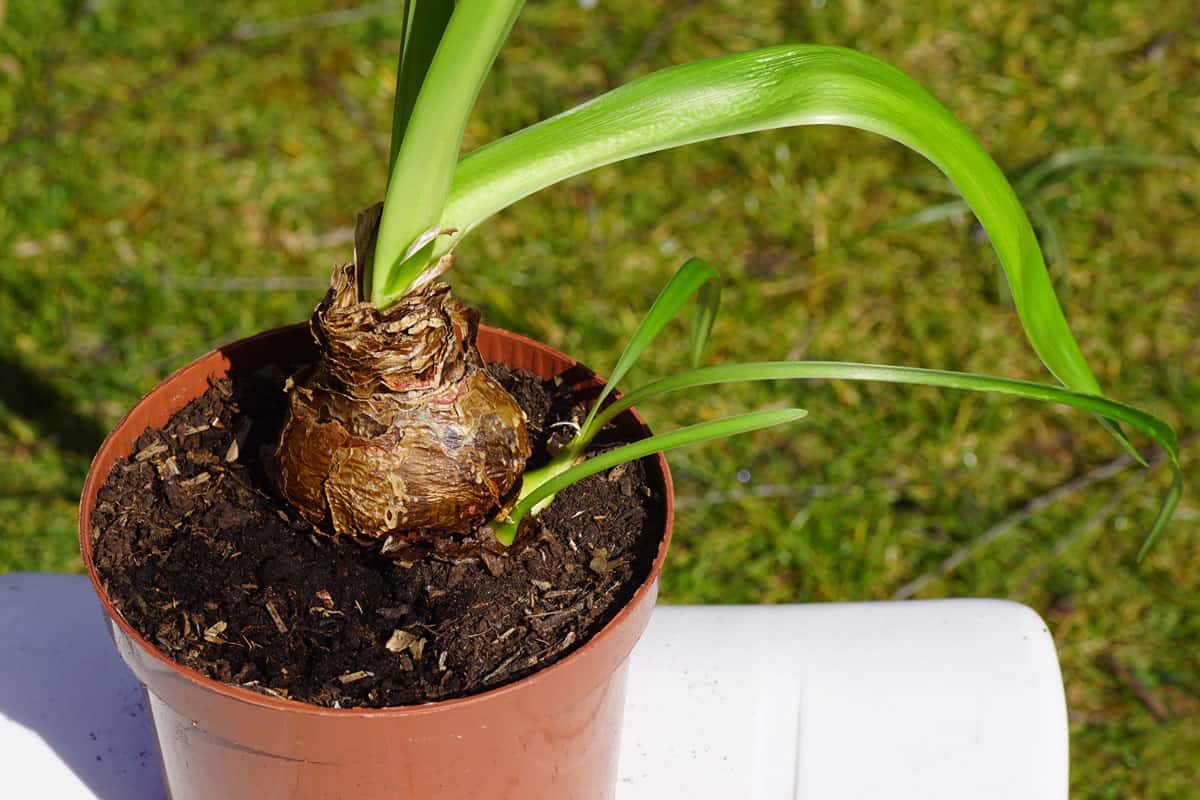
Amaryllis is prone to several diseases. Listed below are some of the common infections of this plant:
Red Blotch
Red blotch, or amaryllis leaf scorch, is a fungal infection caused by Stagonospora curtisii. You will notice red spots on the flower stalk. These spots will eventually turn dark.
This infection causes the flower stalks to wither even before blooming occurs. Amaryllis leaf scorch is hard to identify because the symptoms are similar to signs of an insect attack.
Waysto control red blotch:
- The best way to prevent red blotch is to maintain the cleanliness of the garden. Sterilizing the pots, potting soil, and avoiding waterlogging will help to control this infection.
- If the bulbs are dormant, you can dig them up and remove the diseased parts. Soak the bulbs in a bleach or hydrogen peroxide and water solution for one hour.
- If the infection is severe, destroy the bulbs, the soil, and the container or pots.
- For the growing infected bulbs, repot them in new soil and apply an organic fungicide.
Southern Blight
Southern blight is a fungal disease of amaryllis caused by Sclerotium rolfsii. This fungus can infect legumes, amaryllis, cruciferous vegetables, cucurbits, and other plants outdoors.
You will see signs of wilting and yellowing leaves, while the stems above the soil show white growth surrounding them. The bulbs contain brown, rotted, and soft spots.
The plant will eventually die. This fungus spreads through soil contamination and can infect more plants in your garden.
Dispose of any infected dried materials and leftovers, and avoid adding them to the compost. Clean the surrounding area and apply fungicide to the soil around the stems to control this disease.
You may need to contact a professional or a local nursery to learn the proper treatment for this disease.
Bulb Disease
The bulb disease or soft bulb rot on amaryllis is caused by the fungus Rhizopus stolonifer. The bulbs become soft to the touch due to too wet soil or waterlogging.
The bulbs will decay and become more vulnerable to other fungal infections, such as Southern blight and root rot caused by Rhythium debaryanum. The bulbs will deteriorate and die.
To prevent these problems, ensure the soil is well-drained, the container has draining holes, and avoid excessive watering.
Leaf Disease
Leaf disease in the amaryllis is a fungal infection caused by Cercospora amaryllis. A streak of yellow or brown patterns appears on the leaves.
This disease prevents the flowers from growing and developing properly. Lesions will appear on leaves and stalks, and the leaves may die.
You can use fungicides with copper or zinc to control this disease. Follow the instructions on the label when applying the fungicide.
Summing Up
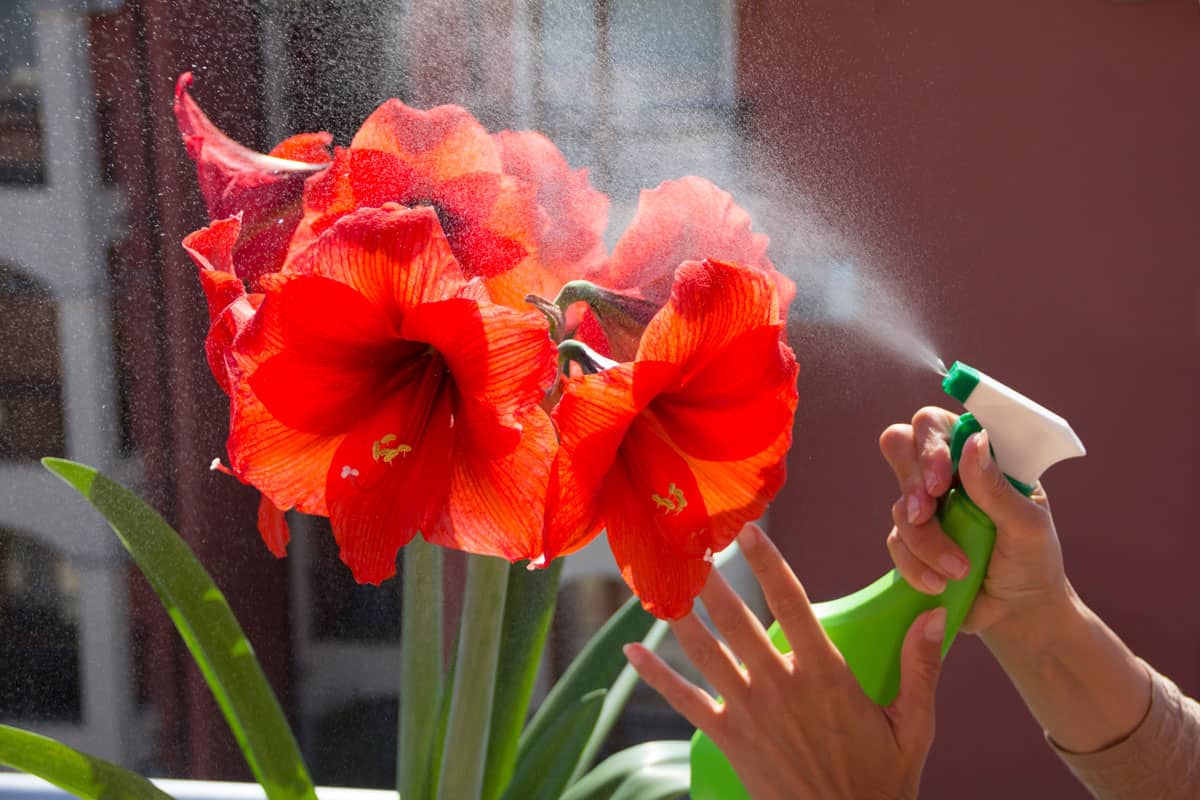
In this post, we tackled when to plant amaryllis and discussed the importance of growing it in full sun. Taking care of amaryllis is easy and growing it in your garden can be fun.
For more helpful tips on gardening, check out these posts:


